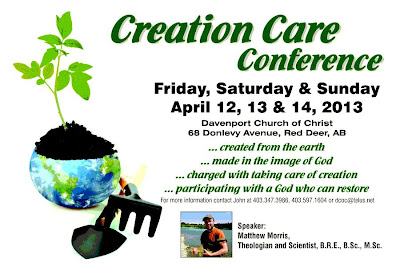How similar are we to animals?
Recently, discoveries in biology have suggested that animals share more in
common with humans than previously thought: culture, emotions, humour, long
term memory, math, tool use, none of these are considered unique to humans any
more. In the past, it was assumed that animals lacked these things, and thus we
could do whatever we wanted with animals. But that is no longer the case.
Environmentalists use this to declare that humans and animals are equals, and
have equal rights.
What is the Christian response to
this? Usually Christians respond with a scoff and some statement about how
we’re better than the animals. But I would like to suggest that the
environmentalists are not all wrong. There is more similarity between humans
and animals than Christians like to believe. But I don’t have to base this off
of biology – we see it quite clearly in scripture.
